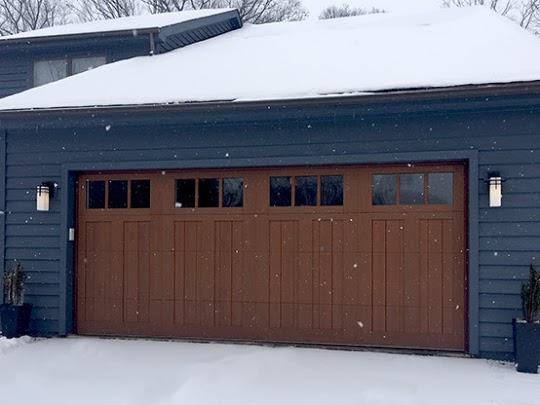As the temperature drops during the winter months, you might encounter a frustrating problem – your garage door won’t open in the cold. This issue can disrupt your daily routine and leave you wondering why your garage door has suddenly become uncooperative. In this article, we’ll explore the common reasons behind this problem and provide practical solutions to help you overcome it.

Understanding the Impact of Cold Weather on Garage Doors
Cold Weather and Garage Doors
Garage doors consist of various components, including springs, tracks, rollers, and an opener. Cold weather can affect these components in several ways, leading to operational issues.
Common Causes of Garage Door Malfunctions in Cold Weather
1. Frozen Springs and Hardware
One of the primary reasons your garage door may not open in cold weather is frozen springs and hardware. The metal components of your garage door, such as springs, hinges, and rollers, can contract and freeze in low temperatures. This contraction can prevent the door from moving smoothly.
2. Lubrication Problems
Cold weather can cause the lubricants used on garage door parts to become thicker or even solidify. This reduced lubrication can create additional resistance when the door attempts to open.
3. Battery Issues*
If your garage door opener relies on a battery for power, cold temperatures can affect the battery’s performance. A weak or dying battery may struggle to provide enough power to lift the door in cold weather.
4. Seal Problems*
The bottom seal of your garage door may become stiff and frozen in cold temperatures. This can cause the seal to adhere to the ground, making it difficult for the door to open.
Solutions to Address Cold Weather Garage Door Problems
1. Thawing Frozen Components*
If frozen components are the issue, try thawing them using a gentle heat source. A hairdryer or heat gun on a low setting can help loosen frozen springs, hinges, and rollers. Be cautious not to overheat or damage the parts.
2. Lubrication*
Apply a garage door lubricant specifically designed for cold weather to the moving parts of your garage door system. This will help prevent friction and ensure smooth operation.
3. Battery Maintenance*
If your garage door opener relies on a battery, consider replacing it with a cold-weather battery that is better suited to lower temperatures. Regularly check and replace the battery as needed.
4. Adjust the Limit Settings*
Your garage door opener may have limit settings that determine how far the door should open and close. Adjust these settings to allow for a slightly higher lift during cold weather to prevent the door from becoming stuck on frozen surfaces.
5. Keep the Area Clear*
Regularly clear snow and ice from around the garage door to prevent it from freezing to the ground. This will also help prevent potential damage to the door’s bottom seal.
When to Seek Professional Help
If you’ve tried the above solutions and your garage door still won’t open in the cold, it’s advisable to consult a professional garage door technician. They can diagnose and address more complex issues and ensure your garage door is operating safely and efficiently.
Conclusion
A garage door that won’t open in cold weather can be a frustrating challenge during the winter months. By understanding the common causes and implementing the solutions mentioned in this article, you can ensure that your garage door continues to operate smoothly even in the coldest conditions. Regular maintenance and attention to cold weather issues will help preserve the functionality and reliability of your garage door throughout the winter.



Leave a Reply